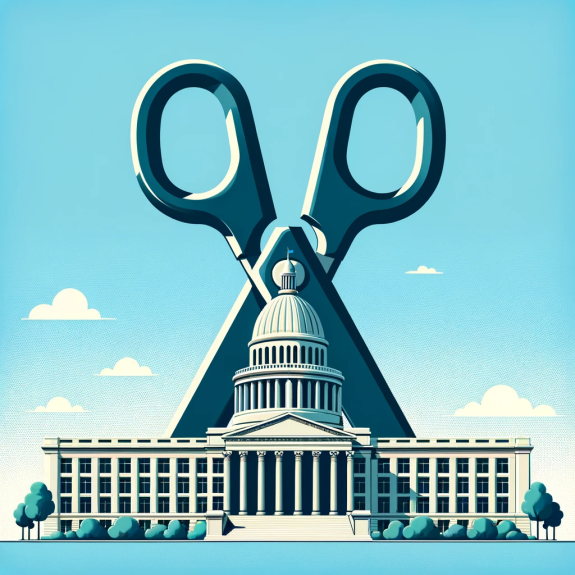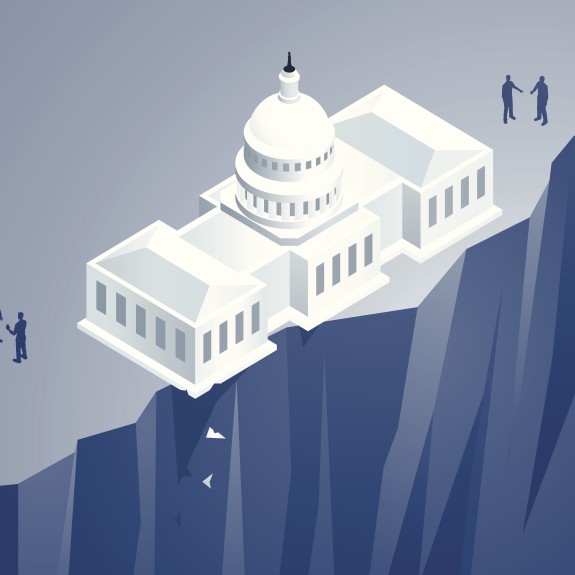State and Local Budgeting in the COVID Era Issue Papers
The State and Local Budgeting in the COVID Era issue paper series builds on the work of previous research efforts to focus on the impact of the pandemic and resulting recession on states and localities; explore how budgeting policies of states prior to the pandemic have impacted how well they were able to handle the crisis; identify risks and opportunities within states that will contribute to their ability to successfully recover from the financial impacts of COVID-19; and make recommendations for policy improvements that will contribute to the fiscal sustainability of states.

Benefit or Burden
The eighth and final issue paper in the series, the report addresses how US states hand out massive tax breaks every year to advance policy goals, such as aiding low-income families, spurring business investment and job creation, or mirroring the federal tax code. Known broadly as tax expenditures, these exemptions, credits, abatements, and other measures reduce state revenues by an estimated $1 trillion a year, almost three times their 2021 total state expenditures on education. Such tax expenditures, which often suffer from lax government oversight, may be leaving states short on revenue at time when the effects of climate change and the cost of deferred maintenance means that they will need to spend more on infrastructure now and in the decades ahead.
This issue paper describes the different types of tax expenditures used by states and how they are disclosed, if at all. To show the wide variations in tax expenditure oversight and disclosure, the issue paper features report cards comparing practices followed by six states with widely differing policies: Alabama, Minnesota, New Jersey, New York, Utah, and Washington. The paper then offers recommendations for states to improve evaluation and disclosure of tax expenditures.

Doom Loop or Boom Loop
The seventh issue paper in the series, the report examines the possible paths ahead for New York and four other large, geographically, and economically diverse cities: Chicago, Miami, Philadelphia, and San Francisco. As activities in the urban core have shrunk, so might returns from urban agglomeration—the geographical colocation of employees and companies that generate productivity benefits for these firms. If New York were to be affected by such a Doom Loop, the estimated direct loss in economic returns from urban agglomeration could amount to $17.2 billion annually.
Agglomeration declines can spur responses in which budget shortfalls lead to shrinking public services and higher taxes, which in turn lead to cycles of decline like those that occurred in the 1960s and 1970s in many US cities. By contrast, remote work presents opportunities for New York and other cities to enter a Boom Loop. As the pace of technological change accelerates, cities could realize significant gains by leveraging the lower costs of WFH for some tasks, intensifying the innovation of in-person work, and increasing spheres of influence via both WFH and modernized transportation networks that enable easier physical access. This opportunity is likely to grow with the explosion in generative artificial intelligence. The paper concludes with specific policy recommendations for avoiding Doom Loop outcomes in New York, along with analyses of the impact of WFH in the four other cities listed above.

State Tax Cuts After the Pandemic
The sixth issue paper in the series, the report discusses the unprecedented federal aid issued to offset the impact of COVID-19. State revenues and cash reserves reached record highs, and dozens of states embarked on the biggest wave of tax cuts in decades, slashing levies by at least $124 billion on everything from personal income to groceries and gasoline. Additional cuts were implemented in 2023, even though revenues had slowed as pandemic-related federal assistance tapered off. With the impact of the tax relief likely to stretch well into the current decade, states risk budgetary shortfalls and reductions in critical public services if revenues shrink by more than anticipated in future years.
The paper discusses whether these reductions can be sustained as revenues have begun to weaken despite the strong US economy, and focuses primarily on the two largest tax-relief categories - income and sales levies. Authors Can Chen and Alex Hathaway outlines key policy recommendations to help states avoid fiscal challenges stemming from these recent tax changes.

On the Edge
The fifth issue paper in the series, the report discusses the American Rescue Plan Act of 2021 (ARPA), which authorized unprecedented levels of federal financial assistance to help state and local governments address the health and economic impacts of COVID-19 and maintain essential public services. The report looks at which states are at risk of a fiscal cliff when the ARPA funds run out at the end of 2026.
Author Beverly S. Bunch outlines four key policy recommendations that will help states prevent budgetary shortfalls and strengthen long-term fiscal health after the federal cash expires. The paper highlights the importance of states using SLFRF for one-time purposes and identifying SLFRF as one-time funds in budget documents.

Revenue at Risk
The fourth issue paper in the series, the report details how New York City, and other municipalities, should prepare to withstand future cuts in federal and state aid, the reduction or elimination of which would force cuts to critical public services.
Author Thad Calabrese recommends that the city use the current opportunity presented by Federal COVID-19 relief money to strengthen the structural integrity of its budget and prepare now to withstand potential risks to state and federal revenue sources down the road. The paper provides a four-point plan to cut the risks of reliance on intergovernmental revenue and strengthen the long-term sustainability of the New York City budget.

A Cloudy Crystal Ball
The third issue paper in the series, the report looks at budget forecasting and management lessons learned from the pandemic, drawing on data from all fifty states and interviews with executive or legislative budget officials in Alaska, California, Connecticut, Idaho, Maryland, and Utah—states with varied economic and fiscal profiles.
Researcher Phil Dean provides concrete recommendations and offers a set of tools help states improve their budget management processes, no matter what challenges the world throws our way.

The $195 Billion Challenge
The second issue paper in the series, the paper examines states’ initial plans for American Rescue Plan Act of 2021 State and Local Fiscal Relief Fund (SLFRF) money, applying standards for sustainability and transparency set out in the Volcker Alliance’s 2021 report Truth and Integrity in State Budgeting: Preparing for the Storm, as well as in previous Truth and Integrity studies.
Researcher Beverly S. Bunch presents an overview of the use of SLFRF money by all fifty states and examines the initial plans of the eleven most populous states. The paper provides recommendations to reduce the risk of future budget shortfalls when federal aid expires, and recommend steps that the states and US Department of the Treasury should take to improve transparency.

New York: State of Debt
The first in the series, this study compares New York’s system of borrowing with that of four other states—California, Florida, Michigan, and New Jersey—with each of those representing an archetype of traditional state debt practices.
Longtime credit analysts Matt Fabian and Lisa Washburn of Municipal Market Analytics Inc., the authors of the Issue Paper, present examples of practices by the other states that New York may want to adopt, and we advance a general set of reforms for the state to follow.